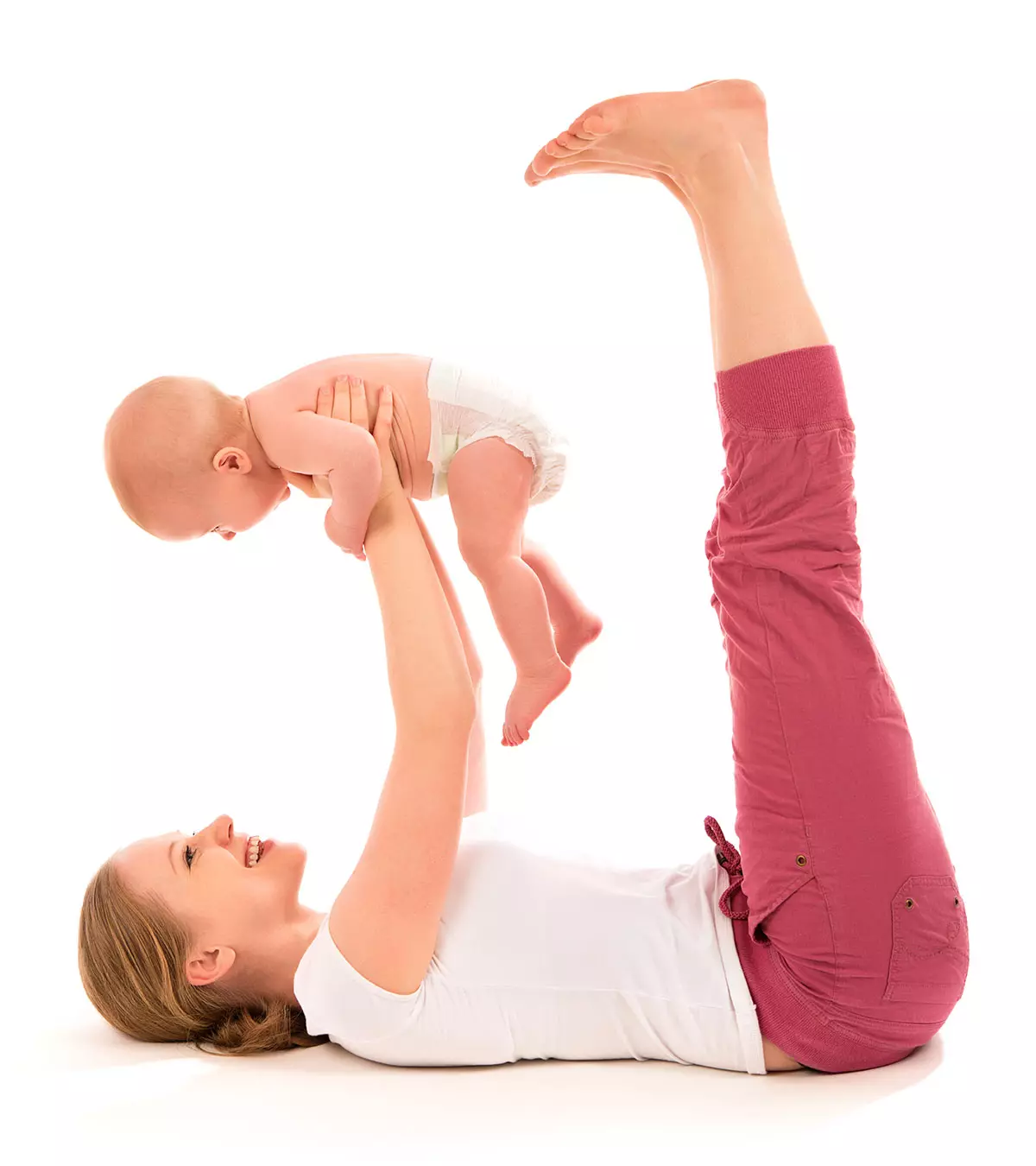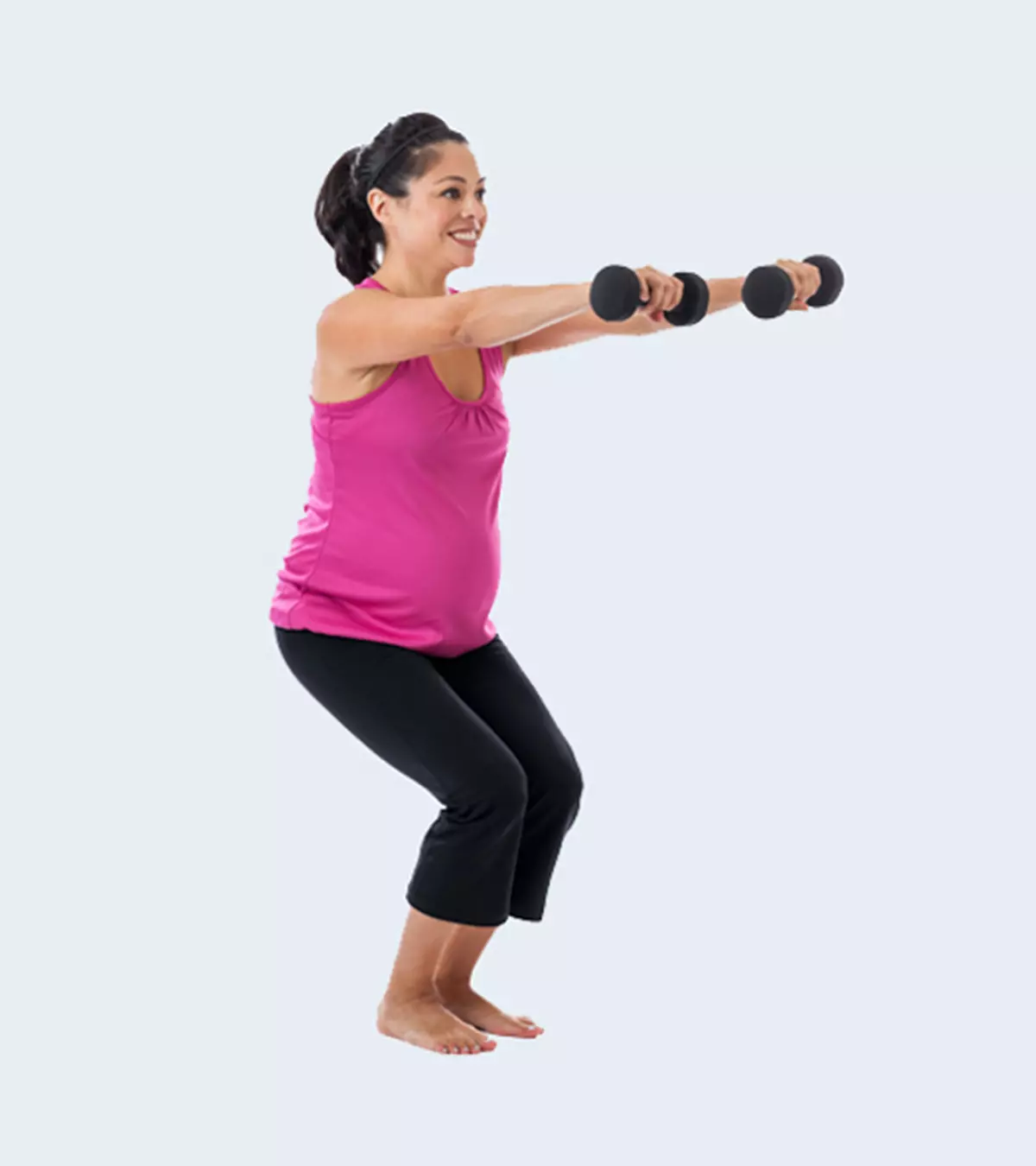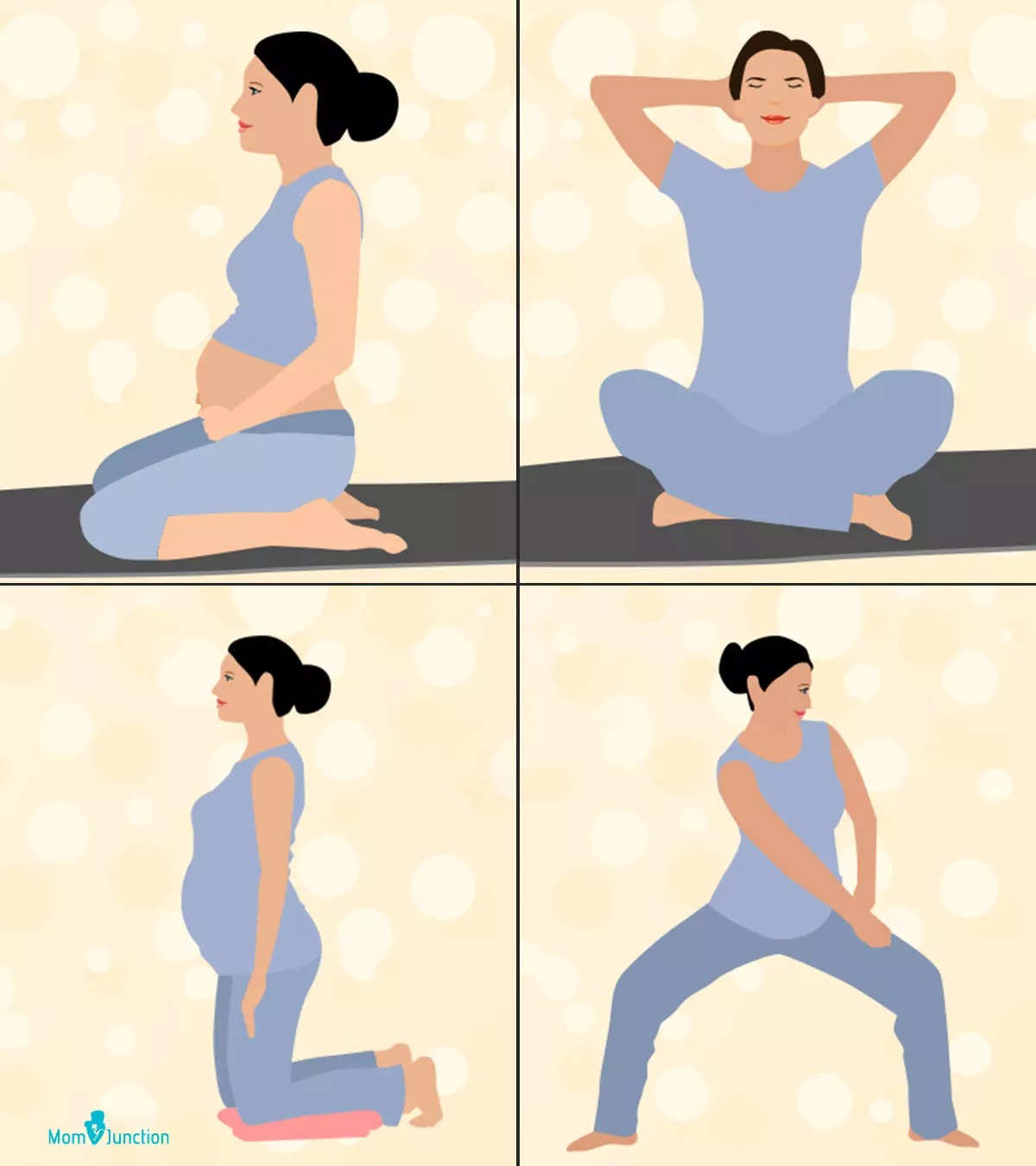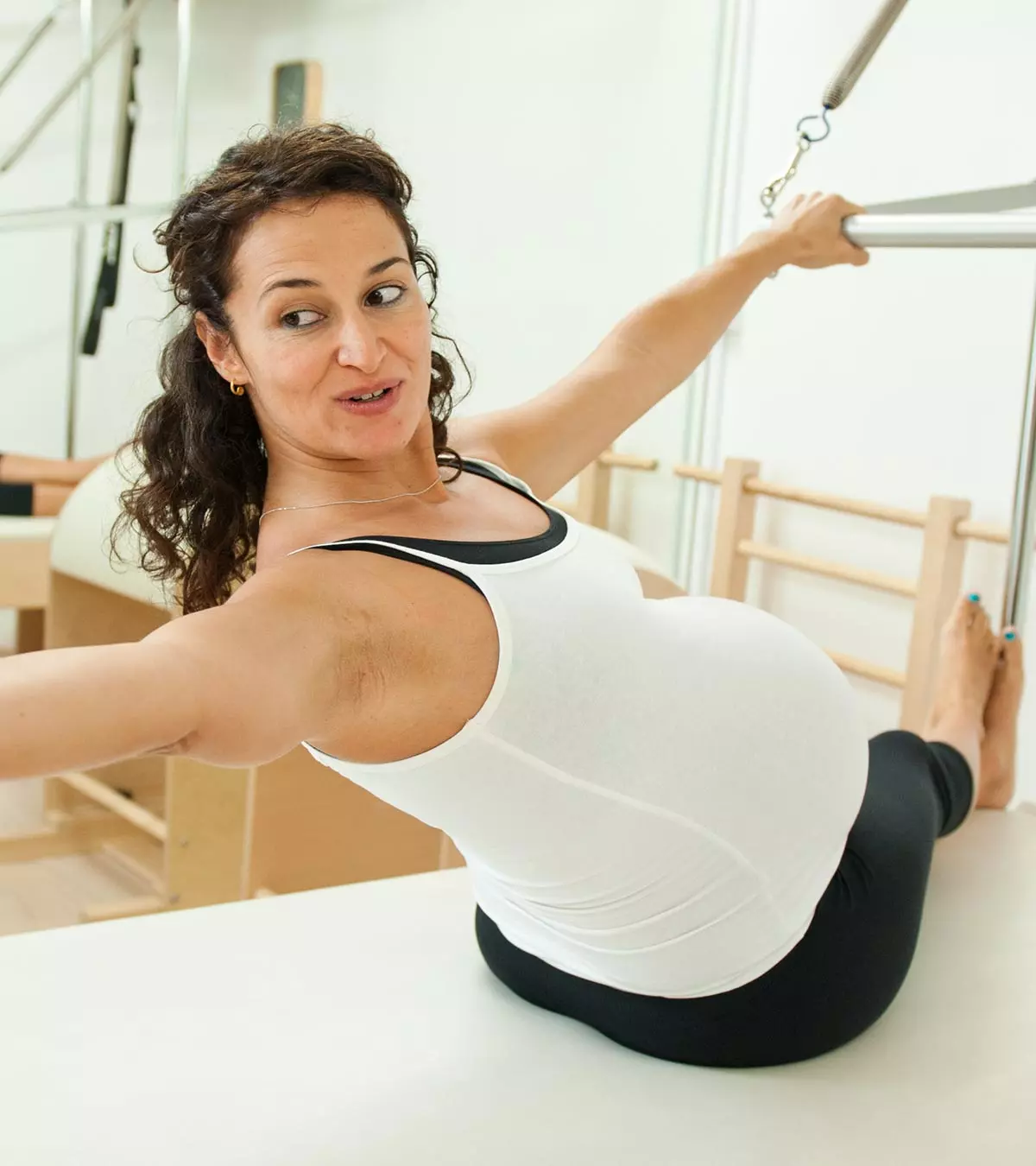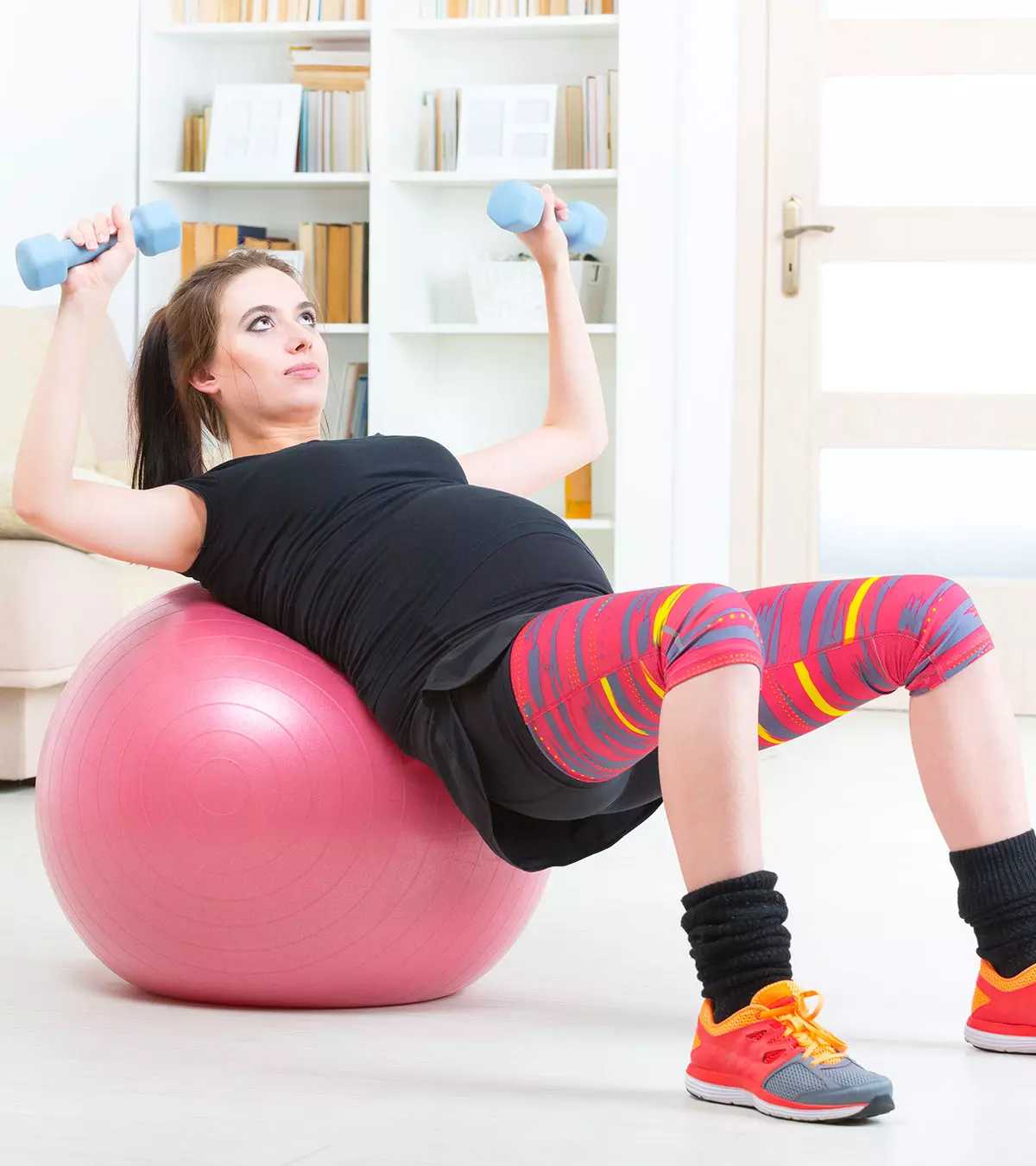
Image: Shutterstock
Labor is thought to be one of the most challenging stages of pregnancy. However, you could perform different exercises to induce labor naturally. Several women opt for induction of labor to ease the process of childbirth. According to the data collected from the US birth certificates by a researcher from St. Louis, MO, labor induction was opted by 31.37% of all pregnant women in 2025.

As the due date approaches, most women become anxious about the impending pain, delivery, or their baby’s health. You can ease this anxiety by performing different exercises. These exercises will help you stay flexible and strong and prepare you for a smooth and easy labor. However, before getting into any exercise routine, it is important to consult your doctor. Understanding the right exercises and techniques helps you choose safe methods and proceed with care.
This post illustrates some of the best exercises to help you get into labor with ease and who should avoid these exercises.
Key Pointers
- To help the baby descend, manage pain, and improve labor, pelvic rocks/touches and tilts are recommended.
- Leaning during labor can relieve pressure on the pelvic area, assist the baby’s movement, and provide rest.
- Squatting can prepare the body for childbirth by strengthening pelvic muscles, opening the pelvic area, and stretching the perineum.
- Walking is a common and effective gravity-positive exercise that can enhance the spontaneous onset of labor, but it is important not to exhaust yourself.
Exercises To Facilitate Labor Naturally
Before you try any of the exercises or yoga for labor, it is imperative that you talk to your doctor about it. You can also consult a fitness coach who is an expert in prenatal fitness.
Below are a few exercises and relaxation techniques that you can try to facilitate a smooth vaginal delivery/ labor. Always make sure you have an assistant or expert with you while you are doing them:
1. Pelvic rocks
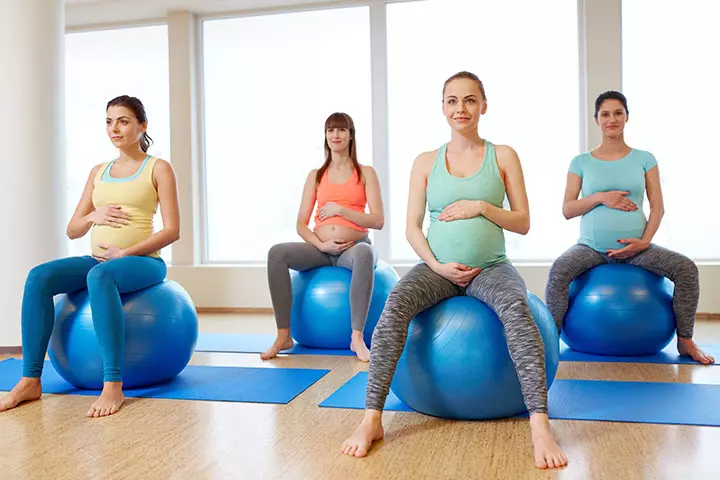
These exercises help pregnant women descend the baby through the birth canal. According to research, the pelvic rocks help in pain management, improving focus and labor process, and offering utmost satisfaction with the delivery (1).
Pelvic rocks or pelvic tilts can be practiced in various ways that include standing pelvic tilts with a chair, lying on the back, seated tilts, and passive tilts with a partner’s help.
How to do it:
Standing pelvic tilts:
- Arrange a solid chair to practice this exercise
- Hold the backside of the chair in a standing position, with your elbows straight
- Bend slowly and push your hips towards the back
- Hold for about 10 seconds and then pull forward
- Repeat the same for a couple of times. Make sure your abdominal muscles are in a relaxed state and buttocks are tightened when you do
- You can try this exercise by standing against a wall too.
Lying on the back:
- Lie on the back with your feet on the floor and knees folded
- Slightly move your pelvis to the front and hold for few seconds
- Now relax and come to the start position
- In case you feel light-headed, or there is discomfort, you can stop the workout
Pelvic rocks on a ball (seated):
- Arrange a Swiss ball or exercise ball
- Sit on the ball, tuck your tailbone and roll forward
- Then get back to the starting position and roll the ball with your tailbone
- Keep repeating several times for about five minutes.
Ensure you have someone to support you through these exercises.
 Did you know?
Did you know?2. Leaning

This form of exercise will help you relieve the pressure on the pelvic area, which has tissues and muscles supporting your bladder and uterus (2). Leaning exercises can give your baby some extra space to move inside the pelvis. Also, they enable you to rest a little during labor.
How to do it:
- You can do this by leaning on anything: it could be on a ball, a wall, a table, or even your partner
- You need to lean by exerting pressure on your back
- Practicing this exercise several times would make your delivery easier
3. Squatting
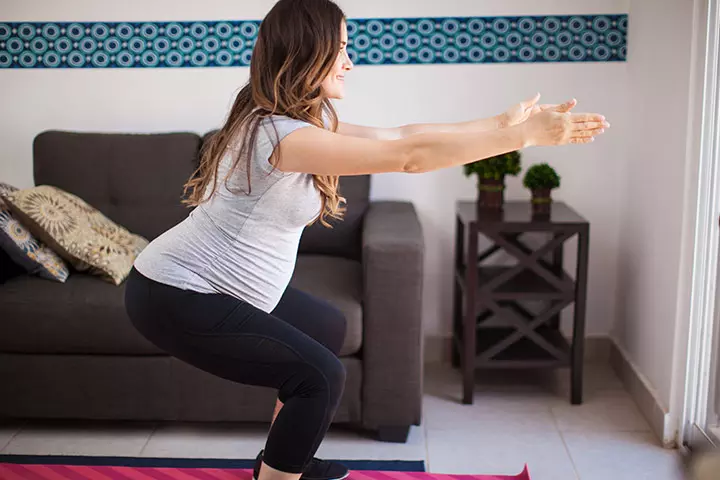
Squats during pregnancy are considered to be one of the most effective and safe exercises to facilitate labor. It strengthens the pelvic muscles and opens up the pelvic area, thereby making it easier for the baby to move down the birthing canal. Also, regular deep squats can relax the muscles and stretch the perineum (3). Squats can prepare the body naturally for childbirth, provided you perform them right.
How to do it:
- Stand straight with your feet apart and keep your shoulders straight
- Lower your body by bending the knees, while ensuring that your back is straight
- It is better if you have someone to hold you and help you with the balance
- Hold the squat position for about 20 to 30 seconds and come back to the standing position
- Repeat it several times a day
4. Walking

It is one of the most common methods to induce labor. This is a gravity positive exercise that strengthens the contractions and leads to active labor (4).
Robin Koogle, now a mother of three, fondly recounts how she used walking to expedite labor. She reflects and says, “I stopped feeling sorry for myself, put my walking shoes on, and did countless laps of speed walking outside. I kept repeating to myself something one of the midwives said in a birth class: No one stays pregnant forever.
“After hours of speed walking … and finally getting in the birthing tub, I gave birth ten minutes before midnight to our perfect 6 lbs, 2 ounces of joy (i).”
A word of caution: Do not walk more than what you should to jump-start the labor, as exhausting yourself could diminish your energy that would be required during labor and childbirth. Remember, your baby will come out only when they are ready.
 Research finds
Research finds5. Kegel exercises

These exercises are effective for strengthening the pelvic floor. During pregnancy, muscles in the pelvic region tend to become loose, resulting in loss of incontinenceiUnintentional urine leakage due to partial or complete loss of bladder control and discomfort. Practicing Kegel exercises regularly will keep the muscles relaxed while you are in labor. Also, these exercises help you learn how to control your muscles during labor (5).
How to do it:
- Identification of the pelvic floor muscles is the first and the most important step. You can figure it out by sitting on the toilet seat and trying to hold your urine. The muscles you tighten are the pelvic floor muscles.
- Once you know, hold or tighten the muscles for about 5 to 10 seconds and slowly release.
- Do not tighten your thighs or buttocks while practicing it
- Start with three to five Kegels a day, and you can increase the number gradually.
- Ten Kegels a day is an ideal number to target.
6. Butterflies

The butterfly exercise offers plenty of benefits to pregnant women. It reduces fatigue, stretches the knees and thighs, and enhances flexibility in the groin and hip region. Practicing this exercise regularly during pregnancy will help you have a smooth delivery (6).
How to do it:
- Sit down with your legs straight and spine erect
- Bend your knees in a way that your soles touch one another, and slowly bring them towards your pelvis region.
- Hold your feet in position, keeping your spine straight
- Now breathe in and breathe out, and start flapping your knees slowly
- Keep taking long breaths and feel your inner thighs stretching. This will relax your muscles
- Finally, release your legs and come to the start position.
7. Lunges
A lunge is proven to be an effective position or exercise to reduce the pain and enable movement of the baby
. Also, it helps the mother with contractions and eases the way down for the baby (7).
A word of caution: Always have a helper while you are performing lunges so that you are not out of balance.
Lunges can be done in different ways, the common ones being standing lunges and kneeling lunges.
How to do it:
Standing lunges:

- Stand straight, keeping your back erect
- Hold your partner’s hand to maintain a balance
- Now, take one foot to the front and lunge. Hold for three to five seconds and come back to the starting position
- Do the same with another leg. And repeat the process about three to five times a day.
Kneeling lunges:

- You can do these on your bed, but make sure to have a helper by your side
- Start with kneeling on both legs
- Now lift one leg and keep the foot down on the bed
- Hold for five seconds and come back to the start position
- Lunge on both sides and repeat the process.
8. Stair climbing

One of the exercises that make the delivery process simpler is climbing stairs. It is considered helpful for safe and smooth delivery (8).
A word of caution: Do not put extra pressure on your body while climbing stairs. Make sure you are climbing the floors slowly and steadily.
Florida-based physician Dr. Matthew Casavant recommends, “Climbing stairs can pressurize the cervix and trigger contractions. Start with two to three flights a few times a day to see if it helps move labor along. Be cautious on the stairs, as falls are more likely during pregnancy. It is advisable to have someone with you for support.”
 Did you know?
Did you know?9. Ball exercises

Exercising with a ball is a recommended, inexpensive, non-pharmacological, and helpful strategy for normal delivery. There are many ball exercises to prepare your body for a smooth delivery. However, it is essential to be careful at every step while you are having fun trying this.
Some other benefits of ball exercises during pregnancy are improved flexibility, resistance, and strength, along with maintained balance in the quadriceps and lower back area (9). Furthermore, you can practice dozens of ball exercises to induce labor.
How to do it:
Rolling on the ball:
- Sit on the ball and gently start rolling by making circles with the ball
- When you roll your pelvis region, it will relax your hip and lower back muscles
- Do not rush or hasten, but be slow while rolling the ball to stay safe
Bouncing on the ball:
- Sit on the ball, and slowly bounce on it
- This movement will help your baby to descend
- You can also try a squatting position with the help of a ball
While all these exercises are suggested for safe labor, there are certain conditions when pregnant women should not exercise.
Who Shouldn’t Exercise To Facilitate Labor?
Prioritizing safety is essential when considering exercising to induce labor. If you have any of the below-mentioned conditions, then you are advised to consult an expert or a doctor before trying the exercises to induce labor.
- Women who have been prescribed complete bed rest should not exercise. Their condition is considered critical, hence professional opinion on exercising is a must.
- If you have a condition named placenta previaiA pregnancy complication where the placenta attaches in the lower portion of the uterus, blocking the cervical opening , then you need to avoid exercises as they may cause complications (10).
- Although there is no evidence suggesting that exercise may be harmful in the case of a twin pregnancy, it is better to seek a doctor’s advice before practicing exercises to induce labor.
- If you are experiencing amniotic fluid leakage, avoiding exercise is better as it could be unsafe (11).
- Pregnant women who have a history of premature labor need to limit or avoid any physical activity to prevent the risks of complications during delivery. In case you want to practice low-impact exercises, consult your doctor.
- If you have a condition called cervical insufficiencyiA condition where the cervix weakens or opens prematurely, increasing the risk of complications during delivery , then exercises to induce labor are not recommended.
Frequently Asked Questions
1. How should I sit to induce labor?
Besides the exercises mentioned above, toilet sitting and tailor sitting may help induce labor and help you ease into the delivery process (12) (13).
2. When is it safe to do exercises that induce labor?
The five weeks before your due date may be an ideal time to start labor-inducing massages, reflexology, and exercises. However, they should be done under the supervision of a professional to avoid complications (14).
3. How often should I do these exercises to increase the chances of labor?
There’s no set time limit when a particular exercise can induce labor. Regular exercise during pregnancy can enhance your flexibility and strengthen your pelvic area, supporting smooth labor and delivery. Remember, labor is a complex process primarily controlled by hormonal changes and the readiness of the baby and mother’s body. While certain exercises may help prepare the body for labor, they do not directly influence the timing of labor.
5. What other natural methods can I try to induce labor?
Pregnant women should not induce labor on their own without medical supervision. According to experts, labor induction should be an option only if the health of the mother or the fetus is at risk. It is because labor induction carries the risk of uterine hyperstimulation and rupture, and fetal distress if not planned and managed as per medical directions (18).
6. Can breathing exercises induce labor?
While there isn’t much evidence supporting the role of breathing exercises in inducing labor, they significantly aid relaxation during labor. Techniques like slow, patterned, and light accelerated breathing are beneficial during various stages of labor (19).
These exercises can make you more flexible and help in the easy passage of the child through the birth canal. Exercises such as pelvic rocks help manage pain and improve the labor process, squatting strengthens and opens up the pelvic floor muscles, and walking strengthens labor contractions. However, before you try any exercise, consult your doctor. Women with placenta previa, twin pregnancies, or other complications should be more cautious while exercising during pregnancy. If you experience any discomfort or pain during an exercise, stop the exercise and avoid it.
Infographic: When Not To Indulge In Labor-Inducing Exercises
When you’re nearing or past your due date, certain exercises can help facilitate labor. However, there are certain situations where exercising may not be advisable. So, check out the infographic below to know when it is not recommended to exercise to facilitate labor.
Some thing wrong with infographic shortcode. please verify shortcode syntax
Illustration: Best Exercises To Induce Labor Naturally

Image: Dall·E/MomJunction Design Team
This video will teach you how to help labor progress naturally at home with some amazing exercises! Discover how to activate labor and get your baby ready to meet you!
Personal Experience: Source
MomJunction articles include first-hand experiences to provide you with better insights through real-life narratives. Here are the sources of personal accounts referenced in this article.
i. My 48 hour labor in a nutshell, and how i’m preparing for baby #2.https://medium.com/@robinkoogle/my-48-hour-labor-in-a-nutshell-and-how-im-preparing-for-baby-2-862f38ab0844
References
1. N. H. Zaky; Effect of pelvic rocking exercise using sitting position on birth ball during the first stage of labor on its progress; IOSR Journal of Nursing and Health Science (IOSR-JNHS) (2016)
2. Labor Support Cards Simple tips for the special time before a birth; Christiana Care Health System (2013)
3. 5 exercises and techniques to train for childbirth; UT Southwestern Medical Center (2016)
4. Changes in your body: What to expect in your 9th month of pregnancy; Rochester University
5. Kegel exercise; Beginnings: Pregnancy, Birth and Beyond; Allina Health’s Patient Education Department (2002)
6. J. Thakur, E. Sharma, and S. Masand; Yoga in pregnancy: A boon to motherhood; Journal of Ayurveda & Holistic Medicine
7. W. D. Adams & A. L. Bianchi; A Practical Approach to Labor Support; AWHONN, the Association of Women’s Health, Obstetric and Neonatal Nurses (2008)
8. T. Shilling A. M. Romano & J. T. DiFranco; Care Practice #2: Freedom of Movement Throughout Labor; The Journal of Perinatal Education (2007)
9. K. Mirzakhani & et al.; The Effect of Birth Ball Exercises during Pregnancy on Mode of Delivery in Primiparous Women; Journal of Midwifery & Reproductive Health (2015)
10. Placenta previa; Patient Care & Health Information: Mayo Clinic
11. Exercise during pregnancy; Children’s Hospital of Philadelphia
12. Best labor positions for speeding up labor; Lamaze International
13. Labor; Stanford Children’s Hospital
14. 5 exercises and techniques to train for childbirth; UT Southwestern Medical Center
15. Supriatiningsih et al.; Effect of Pelvic Rocking Exercise Using the Birth Ball on
Fetal Lie, Attitude, and Presentation; International Journal of Women’s Health and Reproduction Sciences (2019)
16. Isabel Barros Pereira et al.; Physical exercise at term for enhancing the spontaneous onset of labor: a randomized clinical trial; NCBI (2025)
17. 9 Helpful Movements for Labor and Birth; Lamaze International
18. Labor Induction; American College of Obstetricians and Gynecologists
19. Patterned Breathing During Labor; American Pregnancy Association
Community Experiences
Join the conversation and become a part of our nurturing community! Share your stories, experiences, and insights to connect with fellow parents.
Read full bio of Dr. Sangeeta Agrawal
- Dr. Matthew Casavant is the founding physician of South Lake OB/GYN & Advanced Surgery. He received his medical degree from Nova Southeastern University in South Florida and completed his residency as an Ob/Gyn at St. Vincent’s /Mercy Hospital in Toledo, OH. Dr. Casavant also holds a BS degree in Micro and Molecular Biology.
 Dr. Matthew Casavant is the founding physician of South Lake OB/GYN & Advanced Surgery. He received his medical degree from Nova Southeastern University in South Florida and completed his residency as an Ob/Gyn at St. Vincent’s /Mercy Hospital in Toledo, OH. Dr. Casavant also holds a BS degree in Micro and Molecular Biology.
Dr. Matthew Casavant is the founding physician of South Lake OB/GYN & Advanced Surgery. He received his medical degree from Nova Southeastern University in South Florida and completed his residency as an Ob/Gyn at St. Vincent’s /Mercy Hospital in Toledo, OH. Dr. Casavant also holds a BS degree in Micro and Molecular Biology.
Read full bio of Swati Patwal
Read full bio of Rebecca Malachi
Read full bio of Aneesha Amonz






